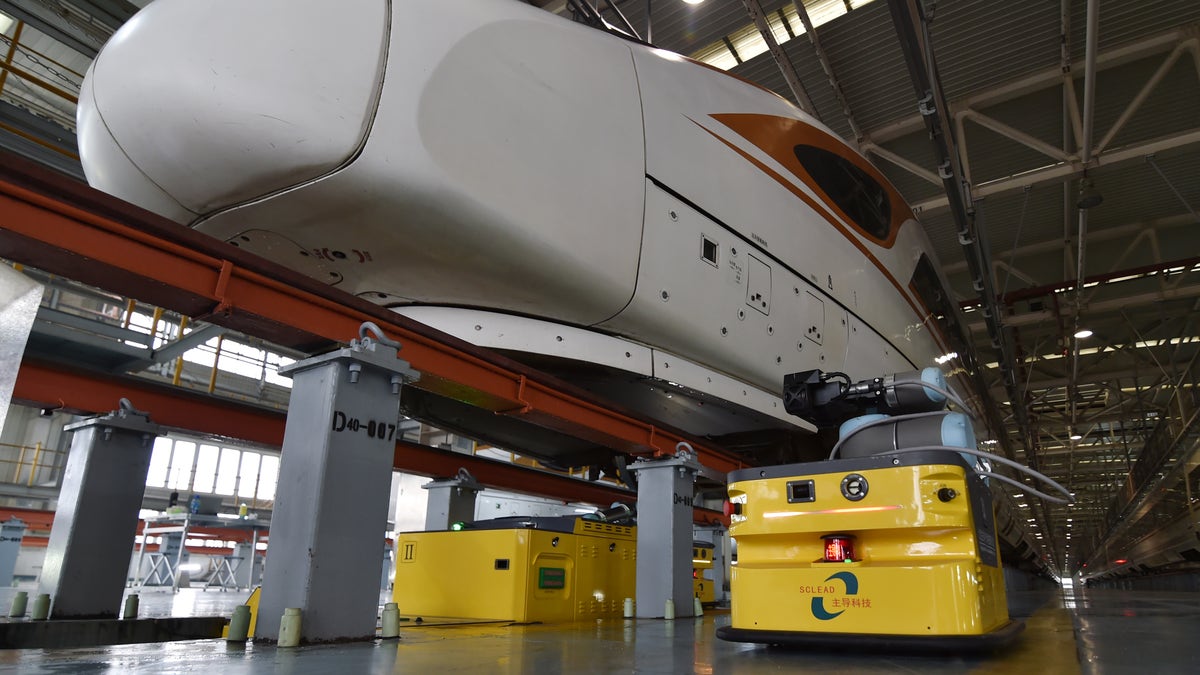US economy in the crosshairs of China's ruthless espionage: Dan Hoffman
Former CIA station chief Dan Hoffman reacts to China stealing patented seeds from U.S. farmers on 'America Reports.'
China will look to accelerate the building of its high-speed railway system through the use of artificial intelligence (AI)-controlled robots tested and designed specifically for the task, according to a report.
"China's use of AI in a signature national project is just another reminder that Xi Jinping is pushing full speed ahead with this strategic technology and the ways it can be applied," Brian J. Cavanaugh, Senior Vice President at American Global Strategies, told Fox News Digital. "If the United States stops competing, stops innovating, on this front, as some have argued, we run the risk of falling behind."
"However, given China's repeated challenges with construction standards and its proclivity for overbuilding, we might pump the breaks on being too in awe of this reported achievement," he cautioned.
As the coronavirus pandemic forced Beijing to maintain its zero-tolerance policy for COVID-19 — leading to repeated and prolonged lockdowns to battle the virus — engineers in China increasingly turned to robotic workers as the path forward to complete daunting construction jobs.
WHAT IS ARTIFICIAL INTELLIGENCE (AI)?
Workers on the Yangqu Dam last year found themselves no longer necessary as Tsinghua University published papers that suggested engineers could complete construction by 2024 using only 3D printers, AI and robots to complete the 590-foot-tall structure.

A robot services a bullet train at a depot in Nanjing, Jiangsu Province of China, on Jan. 20, 2022. (Fang Dongxu/VCG via Getty Images)
Those ambitions and further leaps in AI technology have prompted engineers to suggest that they can produce robots with the abilities to lay tracks, weld, paint and inspect the work on the country’s high-speed train system.
China first unveiled automatic workers for its railway system in 2018 that could lay 1.5 kilometers of track per day, and by 2021 the updated precision and work rate produced robots that could complete 2 kilometers of track a day, the South China Morning Post reported.
China installed as many robots in factories in 2021 as the rest of the world did, accounting for just under half of all heavy-duty industrial robot installations in that time, The Wall Street Journal reported.
LAWMAKERS WARN CONGRESS NEEDS A BETTER UNDERSTANDING OF ARTIFICIAL INTELLIGENCE TO REGULATE
Experts suggest that the decrease in cheap labor alongside the rise in wages in the country has forced officials to rely more heavily on a robot workforce to maintain demands on production that helped make China such a vital part of the global supply chain.
Reports of a lower-than-expected birthrate this year, as well as a projected decrease in its total population of around 100 million by 2050 and 600 million by 2100, have only further increased the need for an automatic, age-proof workforce.

The Libo Railway Station in Libo, southwest China's Guizhou Province, is seen on Thursday. (Liu Xu/Xinhua via Getty Images)
That workforce fits perfectly into China’s plans to continue developing its railway system, which makes use of a structure known as the overhead contact system (OCS) that helps deliver electric power to the trains.
The process to build the OCS is "sophisticated" and dangerous, requiring several workers on the ground to coordinate with workers on a pulley system that raises and secures the various pieces of the system, according to the South China Morning Post.

A high-speed train runs across Yannan Bridge during its test run in Urumqi, China, on Nov. 11, 2014. (Visual China Group via Getty Images/Visual China Group via Getty Images)
New automated technology now collects real-time data from the construction site and transmits it to a smart warehouse that stores and distributes the required material to factories that assemble the various components and ships them out to their destinations.
HOUSE TAKES STEP TOWARD NEW TECH REGULATION: GOVERNMENT STUDY DUE IN 18 MONTHS
Humans play a part in securing the pieces in place and securing the components to each other, but the process until that point is entirely automatic; even the vehicles that transport the materials move automatically.

Employees work at an intelligent furniture factory using 5G and AI technologies in Ganzhou, Jiangxi Province of China, on Oct. 21, 2020. (Liu Zhankun/China News Service via Getty Images)
The warehouse now has the ability to perform self-maintenance and review material, identifying defects and flagging them for removal.
CLICK HERE TO GET THE FOX NEWS APP
A scientist who wished to remain unnamed called the process and pace of construction "certainly impressive" and that it represented "a significant advancement in the field of transport infrastructure."

